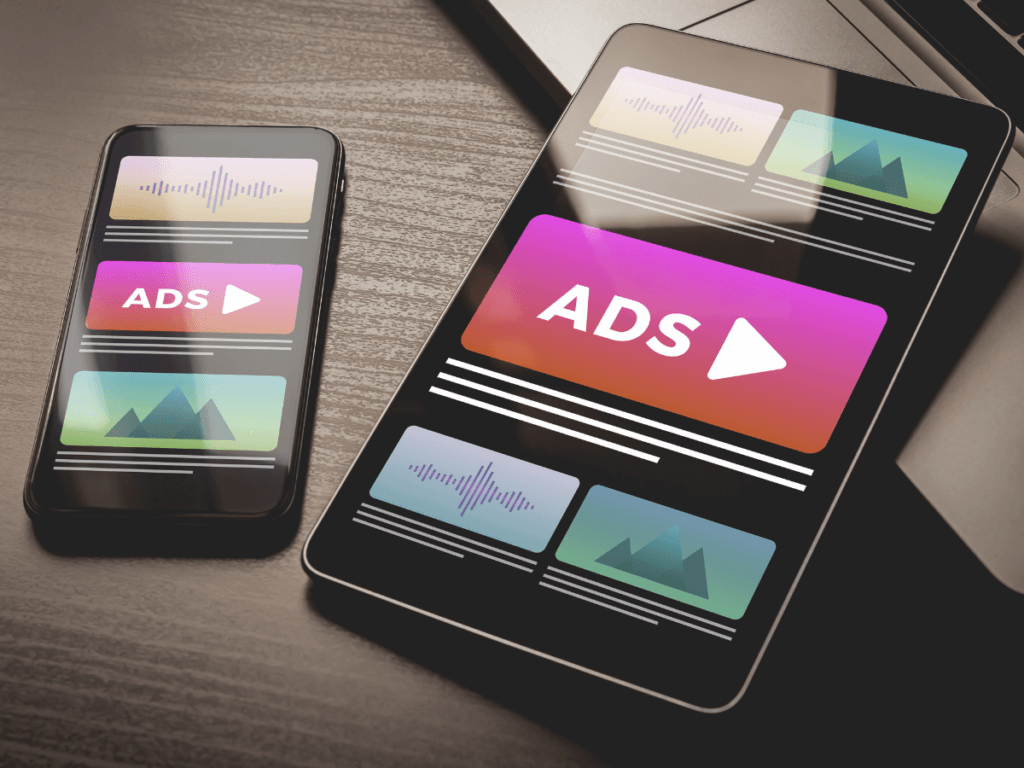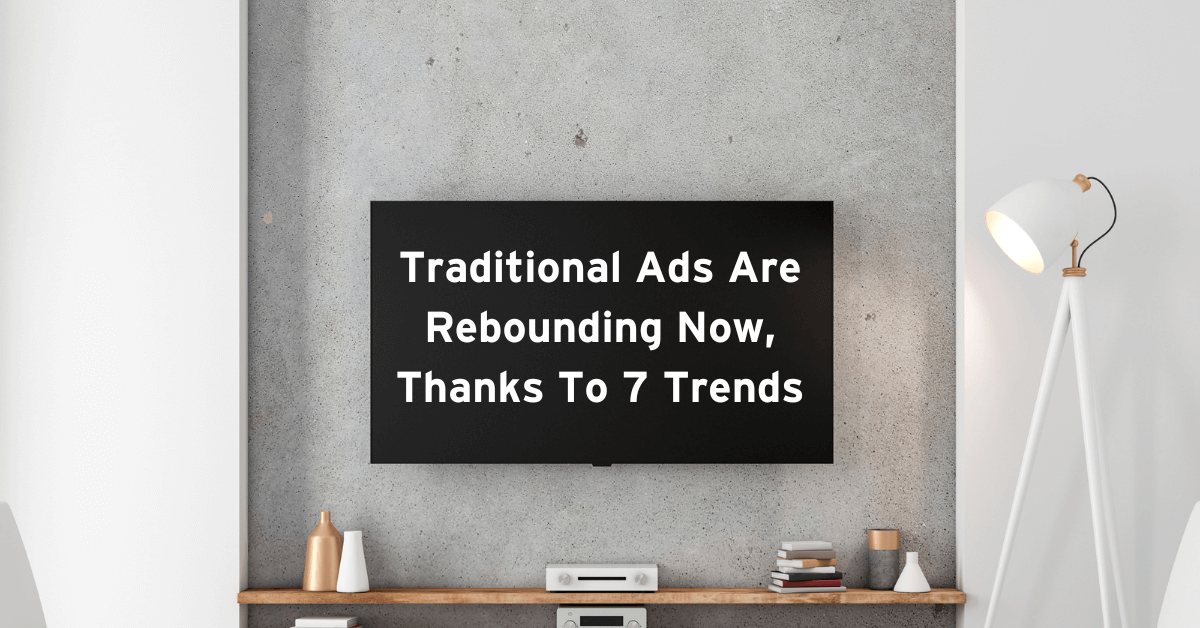
People expect traditional ads to be long-dead. While it’s true that they have declined over the past decade, experts say marketers will spend 2.9% more on them this year. The real surprise? Internet businesses will buy 11.7% more traditional advertising in the coming 12 months.
What’s driving this change, and how can you benefit from it?
What are traditional ads?

Traditional advertising is any type of marketing that isn’t online. For example, there are print ads, TV commercials, direct mail, telemarketing, billboards, and radio ads.
Babylonians drew product pictures on their market stalls. This is not only one of the oldest marketing forms, but it’s also the most researched.
Why are traditional ads growing after such a long decline? Here are 7 reasons.
Digital ad indifference
Digital ads are everywhere, and people are becoming more indifferent to them. A Hubspot survey declares that 57% of those surveyed dislike ads playing before a video and 43% didn’t watch these ads. Frustrating digital ads can cause viewers to think negatively about the brand they advertise.
Advantages of traditional ads vs modern advertising

Studies say people pay attention to conventional advertising more. Case in point: MarketingSherpa surveyed 1200 people. Of these, 52% said they watch TV ads for companies they like. Even 29% of those surveyed watch TV ads for companies they don’t like.
People trust traditional ads more
The same MarketingSherpa study stated:
- 82% trust print advertising
- 80% trust TV advertising
- 76% trust direct mail
- 71% trust radio ads
American and British consumers have more confidence in classic ads than in social media advertising. Why not use offline ads to win back some of those prospects jaded by digital ads?
The decline of 3rd party cookies

Let’s say you own website ABC, but you want to display ads from company XYZ (a third party.) The way it works now, company XYZ will place tracking data (a cookie) on your device to measure the effectiveness of their ads.
However, Google is phasing out cookies on their Chrome browser by late 2023. By far, Chrome is the most used browser on the internet. Apple’s new iOS14 operating system will also prevent using cookies.
Without cookies, marketers will be forced to use older ad methods like segmentation. Without the targeting data from cookies, marketers will have to reach more people to get similar results.
The growth of podcasting
Podcasting is digital, yet its episodes are on-demand, which is more like how people choose traditional radio stations. Ads Wizz reveals that between late 2019 and early 2020, there were 53% more podcasts, but 83% more podcast ad impressions.

People tend to trust a podcast host and whatever they endorse. An Edison Research study shows that nearly 50% of podcast listeners trust podcast ads more than any other format.
Combining digital and traditional ads gets more results
Direct mail is seeing a resurrection. Paired with QR codes, people can scan to learn more. Unique URLs plus QR codes empower marketers to measure ROI and see what actions lead to purchases.
Before this, digital ads had a monopoly on this kind of information. But now, this combo offers just as much analytical marketing data as digital ads.
Fine-tuning message and brand fit with traditional ads
Some brands, markets, and messages will simply find better success with classic advertising methods. Broadcast TV is still a great medium for humorous storytelling. For example, there’s the Extra gum commercial highlighting how we can finally meet face-to-face after the pandemic.

Decades ago, whole families used to watch the same TV. Now everybody has their own device.
“Addressable TV” is a new ad technology. It allows serving different ads or ad groups within the same TV segment. Services like Finecast allow precision targeting of viewer segments across on-demand and live-streamed TV.
Re-examining Digital Effectiveness
At least 90% of marketers track the effectiveness of their digital ads once a month or week. Over 57% of them watch these ads in real time. However, platforms like Google and Facebook control ad inventory and how they present the success of an ad campaign.
This is why some feel their ads are far less effective than these platforms are reporting.
In addition, research shows that retargeting and personalization can backfire if done incorrectly. You need to be cautious and get help from experienced marketers instead of blindly embracing digital advertising.
What traditional advertising means for you
Marketers and consumers are trusting digital ads less, yet people still trust offline ads. The threat of tracking cookies becoming obsolete is forcing marketers to look more at traditional methods.
New technology is making podcast and TV ads more profitable. A new way of combining direct mail with QR codes multiplies the effectiveness of these methods.
Not only this, some messages and brands work better with traditional ads. Why not see how you can use them more effectively?





